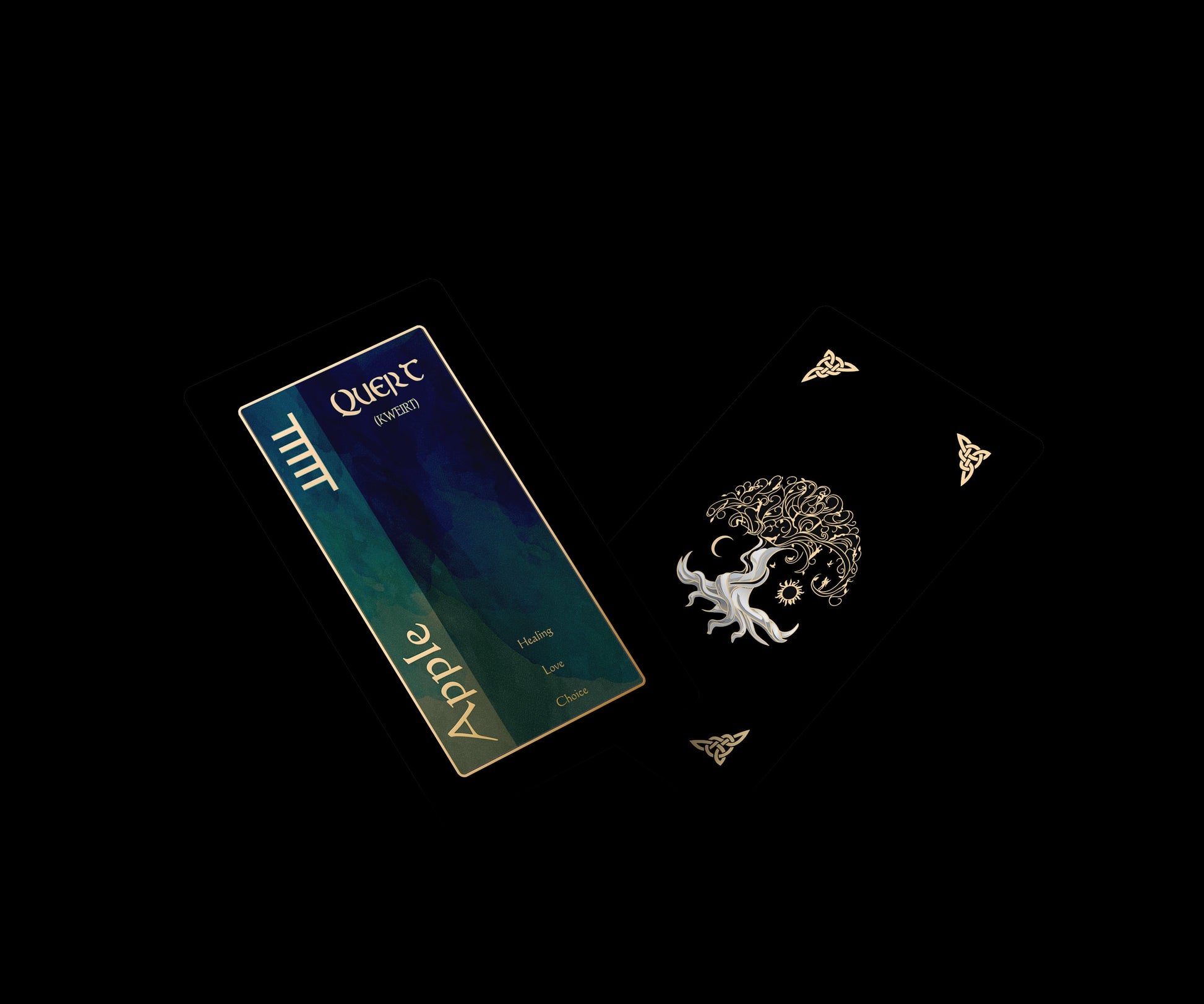Ogham Expanded

What is the Ogham?
Ogham, also known as Ogam (modern Anglicised spelling) isan ancient written language that was used in Ireland and parts of the UK between the 5th and 9th centuries. The Ogham alphabet is the earliest known form of writing in Ireland

The Three Little Sisters
The Celtic Deck of Ogham




The Ogham

History of the Ogham
Fenius Farsa travelled to the Tower of Babel, with his companion and scholars. There he studied and created the "the selected language" known as Bérla Tóbaide. By taking the best of each of the confused tongues, which he called Goídelc, Fenius Farsa created Goídel, Bérla Féne, Íarmberla, and the Beithe-luis-nuin (the ogham) as a perfected writing system for his languages.
The names he gave to the letters were those of his 25 best scholars.
Some say it was Ogma who invented Beithe-luis-nuin (the ogham). Ogma was skilled in speech and poetry, and created the system for the learned, to the exclusion of rustics and fools. The first message written in ogham was seven b's on a birch, sent as a warning to Lug, meaning: "your wife will be carried away seven times to the otherworld unless the birch protects her". For this reason, the letter b is said to be named after the birch, and In Lebor Ogaim goes on to tell the tradition that all letters were named after trees.

Details on The Ogham
- There are 25 letters in the Ogham, which are grouped into five aicmí (sing. aicme = group, class). Each aicme is named after its first letter. Originally Ogham consisted of 20 letters or four aicmí; the fifth acime, or Forfeda, was added for use in manuscripts.
- Ogham is climbed (i.e. read) as a tree is climbed, i.e. treading on the root of the tree first with one’s right hand before and one’s left hand last. After that it is across it and against it and through it and around it.” Auraicept na n-Éces , 650 – 700 CE
- Letters that point right when looking at them vertically (beith, lus, fern, sail, nin) will point downwards when written horizontally. (This is the first Aicme, or group of 5 letters.)
- Letters that point left when looking at them vertically (húath, dair, tinne, coll, ceirt) will point upwards when written horizontally. (This is the second Aicme, or group of 5 letters.)
- The third Aicme (muin, gort, ngétal, straif, ruis) just flip from side to side slanted lines, to up and down slanted lines.
- The fourth Aicme (ailm, onn, úr, edad, idad) which are straight across lines when reading them on vertical Ogham writing, can be represented by straight lines, or by dots instead of lines, when reading them on horizontal script.
Explore the Apothecary
-

Apothecary
We’re proud to offer a selection of our very own handcrafted oracles...
-

Guidebooks
We're excited to let you know that guidebooks are available for all...
-

Divination Decks
Custom-made oracles, tarot, rune, and other decks for divination. Each deck is...



